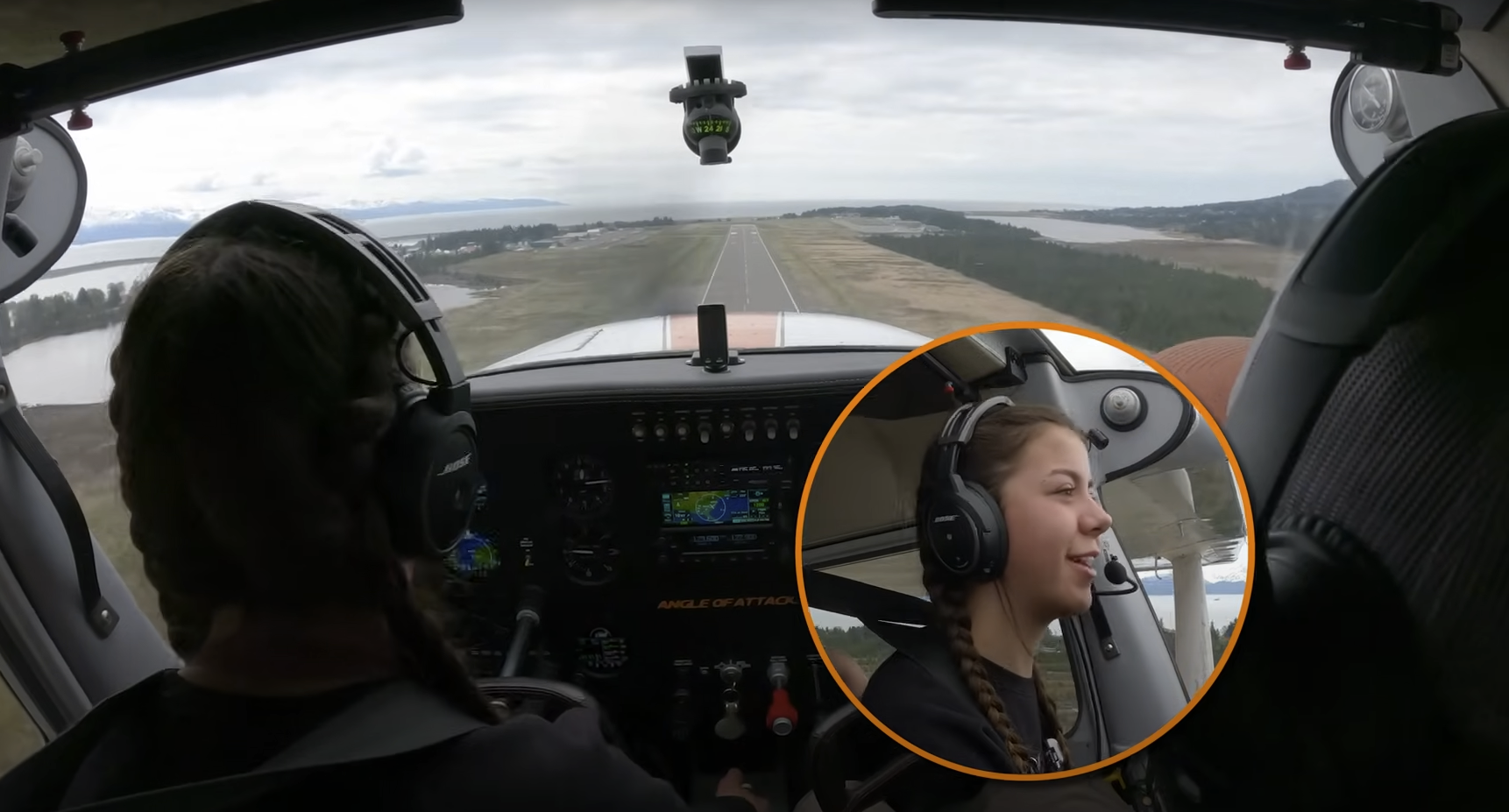Now it’s time for a Short Field Landing. To make things more challenging, we’ll be landing in Seldovia, Alaska. Surrounding by terrain and trees, it can be a challenge to get into.
Also, we’re going to use a technique of staying higher over the terrain and then slipping down into the runway. Admittedly, I could have done much better on this run. If I would have stayed a little slower and started sooner, it would have looked much better.
Doing a forward slip on landing allows you to lose altitude or get over some trees and still save some space at the start of the runway.
The short field landing with trees and terrain around can be intimidating, but with instructor and practice it’ll be second nature.
Generally on a short field landing you’ll fly a slower approach speed, and hit a target at the start of the runway. The idea is we have a REALLY short runway we need to land on. In this case, it’s 1900 feet which is quite long at sea level.
That’s why my little mess up was forgivable at the very least.
Enjoy and let me know if you have questions.
Chief Flight Instructor and President of Angle of Attack. Founded in 2006.

Stay Connected
Be the very first to get notified when we publish new flying videos, free lessons, and special offers on our courses.






